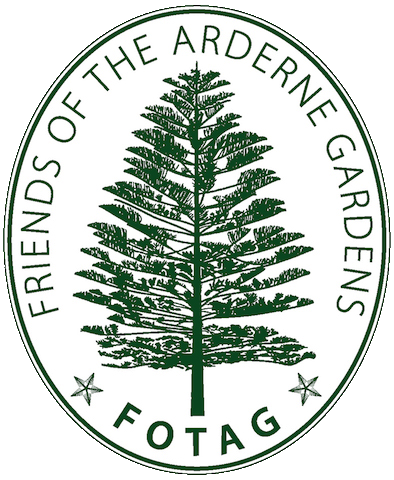The Friends of the Arderne Gardens group believes that future development of the arboretum should focus on Southern Hemisphere species. The park already boasts a good collection of Southern Hemisphere trees, notably the Araucarias, and this theme will be continued and developed when trees are planted to replace those that die. The origins some of these Southern Hemisphere species can be traced back some 200 million years, to a time when the land masses of Africa, Australia, India, Antarctica and South America were joined to form Gondwanaland. See our Gondwana Trees page for more information.
Arderne Gardens Renaissance
FOTAG fundraises to continue the work of clearing, replanting, re-treeing and generally improving the amenity of the garden for the public.
PHASE 1 - COMPLETE
This section, which has been completed, has received much positive feedback from the public. The area was cleared of weeds, growth was 'lifted' and the area replanted. A routine maintenance programme is now in place, with very limited resources. The areas around the pond have been cleared and planted up with material from other parts of the garden and from plant donors. Propagation of existing plant material for the purposes of renewal, continues in the nursery at Arderne. The other phases of this project follow the same process.
PHASE 2 - COMPLETE
This phase aims to clear and plant up areas in blue on the map. Its main aim will be to plant rare trees, guided by the Gondwana theme, and reorder and plant the many plant beds in an attractive but cost effective and waterwise way. This area includes the middle and bottom pond, which have become somewhat overgrown with weeds, and have much potential for becoming a beautiful landscape, with the addition of suitable wetland species and care of existing species. At present a neglected area is being cleared and mulched and will be planted up with Zantedeschia aethiopica (Arum Lilies), a donation received from a resident. With funding, this area could become a showcase for wetland gardening in public spaces. We need more labour to clear, mulch and replant this area, which includes the lowest pond to the left of the entrance to the Gardens.
PHASE 3 - FUTURE
This phase aims to create new visual and pedestrian links between the existing lawned area by laying down lawn, gravel or low ground covers and in so doing also reducing the the maintenance of the extensive plant bed system and improving safety for visitors. We will clear areas around the special and unique trees for greater visibility and access to the trees. We will also start a program of re-treeing the Arderne with special replacement trees as the present population is already very aged. We will also continue propagation of existing and donated plant material in Newlands and Arderne nurseries.
We wish to concentrate on the all important entrance and Main Road section of the Arderne arboretum to make it more inviting and attractive and to showcase two of the largest trees in Africa – Ficus species. We will be lowering hedges and removing unsuitable plants; lifting tree branches and replanting the entrance area, as well as creating a large link between the front entrance lawn and the famous 'Wedding Tree' (Ficus macrophylla) by planting up lawn.
Photo courtesy Paul Barker
Zoleka May, Supervisor at the Plant Production Nursery for Kirstenbosch National Botanical Garden, with rare tree seedlings for the Arderne Gardens.




